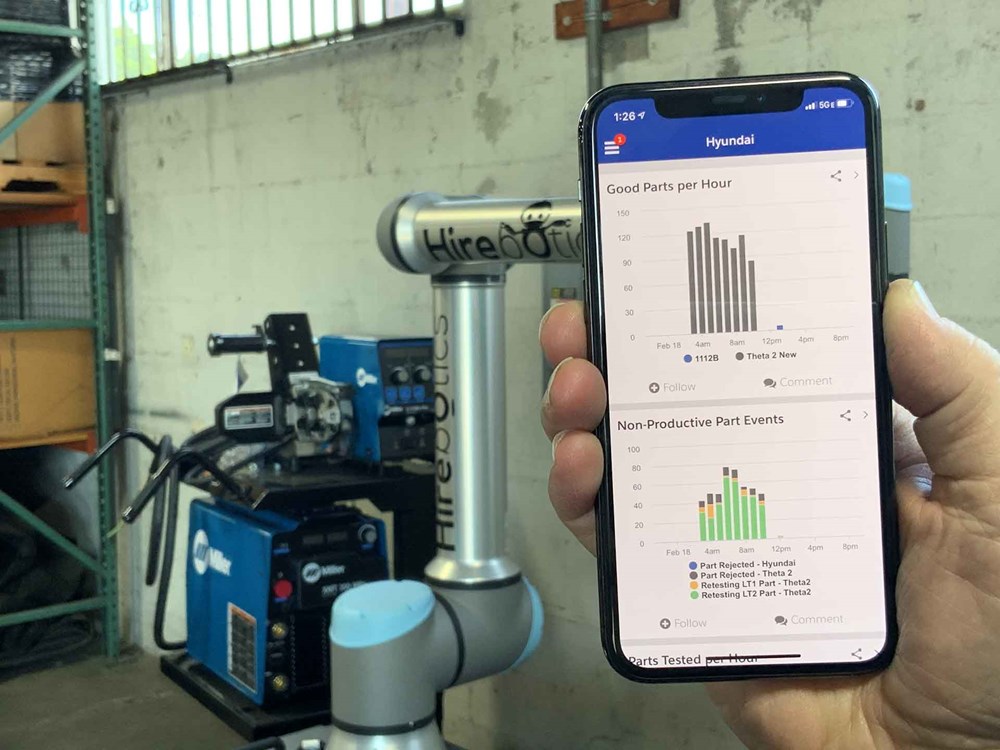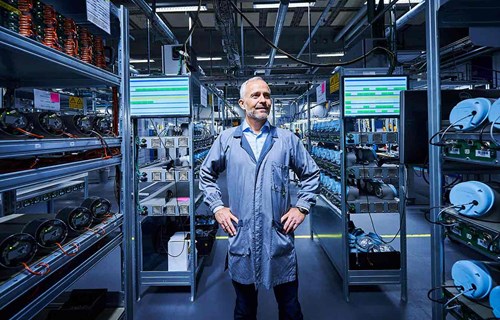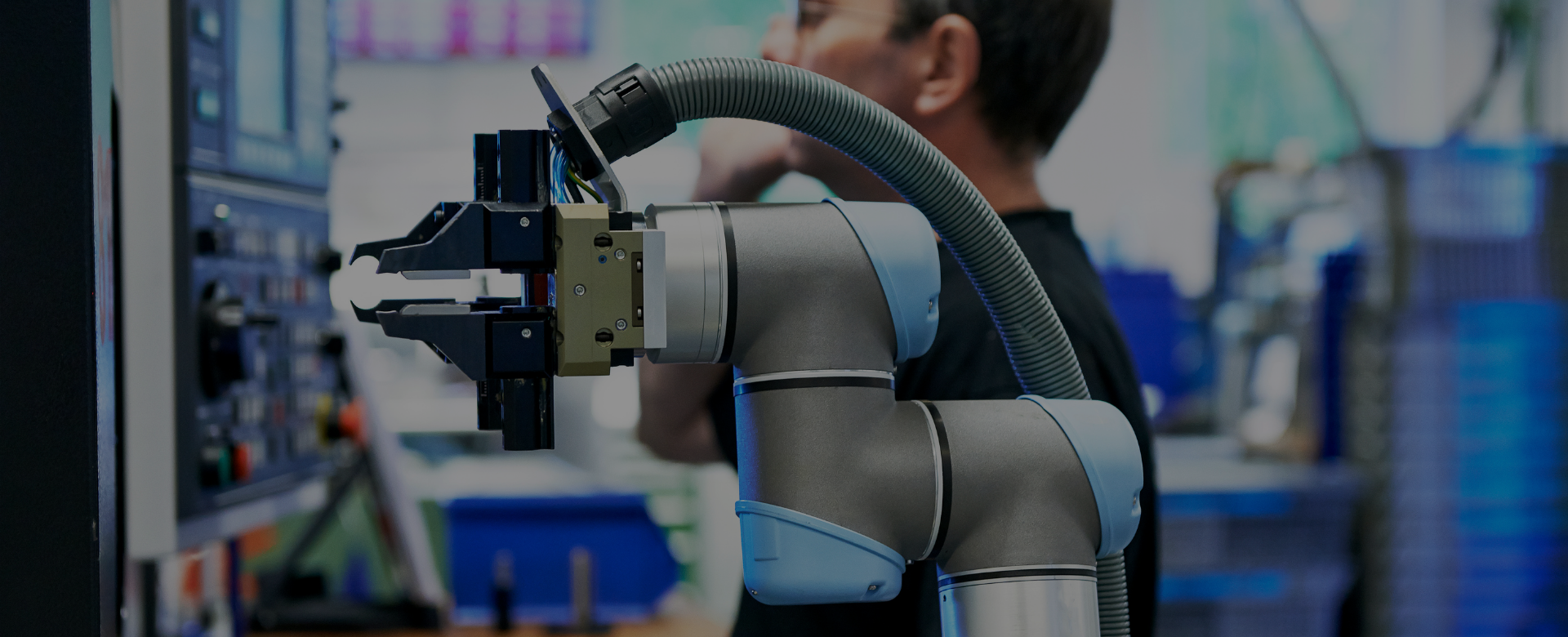1. ANALYTICS
There are two questions for which analytics are used to answer: “what happened?” and “what is going to happen?”
“What happened?” is answered by collecting machine data from your cobots so that you can understand historical production data, cycle time variations, sources/causes of downtime, and more. There are a number of solutions for collecting and visualizing machine data. Some of these solutions collect generic and basic information, similar to a stack light—red, yellow, green, to signify machine status—in order to aggregate data about your factory.
Other solutions focus on deeper integration with a particular piece of equipment, like a robot. Cobots, in particular, are sophisticated machines and have significantly more information available for advanced analysis. These software solutions can be particularly useful in tuning a robotic application for more throughput or to pinpoint hard to find programming issues.
“What is going to happen?” is answered by sophisticated software that leverages machine learning to gain a deeper understanding of a particular application and alert experts when there are trends that deviate from normal operation or anomalies are detected. Most of these solutions take advantage of cloud computing to build predictive models, which can also run in the cloud or sometimes on an edge device.
2. BACKUPS
Programming a cobot in a production environment can take time to get right. And over time, changes are often made to a cobot program to accommodate new part numbers or changes in the environment. While you can typically take manual backups of your work to protect your investment, many businesses increasingly want to make sure their work is backed up to the cloud.
Backing up a cobot to the cloud provides both tremendous peace of mind and new capabilities. Cloud backups are often real-time and don’t require remembering to plug in the USB stick or trying to remember which version is saved where. Furthermore, if your cloud backups also track versions, you no longer have to remember to “version the file name” to track your changes (e.g. file names like Sprocket_v1.2.program, Sprocket_v1.2a.program).
Other critical files are often backed up, too, such as log files and other diagnostic and calibration files on the cobot. These files, while not needed day-to-day, are vital when trying to troubleshoot issues or in the unfortunate event of having to replace or rebuild a failed robot controller. Having these files safely in the cloud allows access when you need it most. And some backup solutions offer the ability to easily share these files with your cobot distributor, cobot integrator, or Universal Robots directly.











